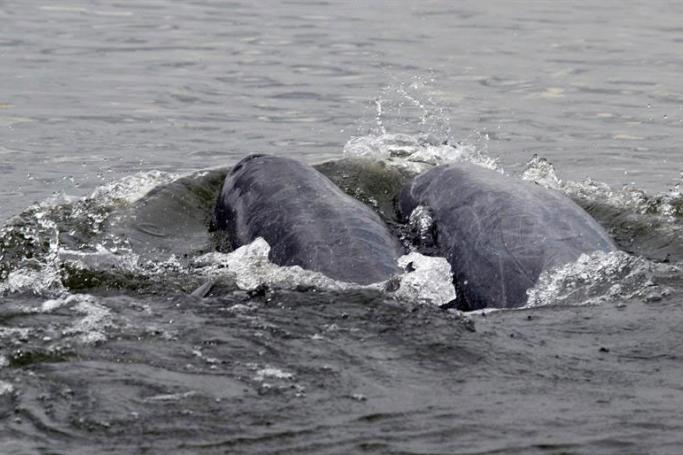The population of Irrawaddy Dolphins in Laos has fallen to just three, bringing into question the species' survival in that country, according to the World Wildlife Fund.
A survey conducted jointly by the branches of WWF in Laos and Cambodia found in March of this year that numbers of Orcaella brevirostris, a freshwater-dwelling species of dolphin had reduced to only three, Amphone Phommachak, WWF-Laos Southern Provinces Coordinator, told epa Friday.
Speaking about the field report, Amphone said joint research discovered the remaining population of the mammals is confined to the Cheuteal conservation pool in the transboundary area of the Mekong River on the border with southern Laos and northern Cambodia.
"Early this year we thought there were six, but now there are three," she said.
A final report on the Mekong dolphins, still under preparation, will seek to determine exactly how fast the population declined since 2012.
The key threat facing the dolphins are gill nets used by local fishermen, in which the mammals get caught and eventually drown, Amphone said.
The nets are prohibited in the Cheuteal pool but are still used outside of it, where the dolphins swim.
Though the government and WWF have tried to convince the fishermen to remove the nets from the area, it's not easily done as local people depend on the river for their livelihoods.
About 80 dolphins are thought to live in Cambodia, where gill net use is banned in the Mekong River, according to WWF.
With a conservation status classified as vulnerable, Irrawaddy Dolphins live mainly in fresh and brackish water in a number of Southeast Asian countries, where their numbers range from tens to a few hundred, according to the International Union for Conservation of Nature Red List.
About 5,800 are thought to live in the coastal waters and mangrove forests of Bangladesh.
The mammals are not directly exploited, but face threats from fisheries and habitat loss.
EPA
You are viewing the old site.
Please update your bookmark to https://eng.mizzima.com.
Mizzima Weekly Magazine Issue...
14 December 2023
Spring Revolution Daily News f...
13 December 2023
New UK Burma sanctions welcome...
13 December 2023
Spring Revolution Daily News f...
12 December 2023
Spring Revolution Daily News f...
11 December 2023
Spring Revolution Daily News f...
08 December 2023
Spring Revolution Daily News f...
07 December 2023
Diaspora journalists increasin...
07 December 2023
Photo Essay












